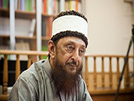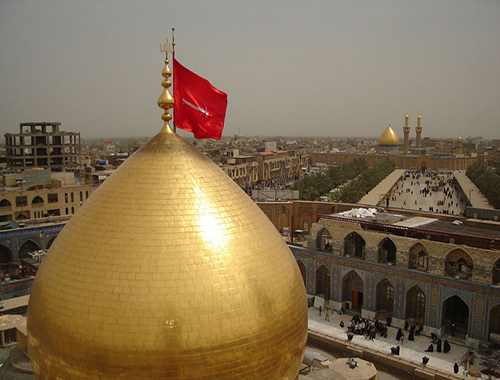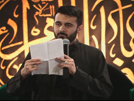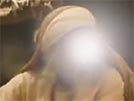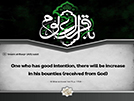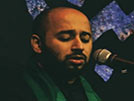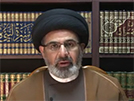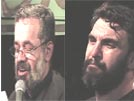Religious Pluralism
- Details
- Hits: 4131
Religious Pluralism
The most famous proponent of modern religious pluralism is John Hick, who abandoned his Catholic exclusivist view and formulated his specific theory in the seventies. Hick’s pluralistic hypothesis claims that each religion in its own way represents an authentic revelation of the Divine world and a fully authentic means of salvation. He believes that all religions are culturally conditioned responses to the same ultimate reality; and, therefore, are equally valid, and salvation is possible through any of them.
Hick uses the famous story of the Hindu mystics to illustrate his point:
“An elephant was brought to a group of blind men who had never encountered such an animal before. One felt a leg and reported that an elephant is a great living pillar. Another felt the trunk and reported that an elephant is a great snake. Another felt a tusk and reported that an elephant is like a sharp ploughshare, and so on. And then they all quarrelled together, each claiming that his own account was the truth and therefore all the others false. In fact of course, they were all true, but each referring only to one aspect of the total reality and all expressed in very imperfect analogies.”[7]
There are many flaws in Hick’s hypothesis. The most serious problem is of reconciling the conflicting truth-claims of various religions: for example, monotheism of IslÄm as opposed to polytheism of Hinduism; death and resurrection of IslÄm and Christianity as opposed to reincarnations and reaching the state of nirvana of Buddhism; salvation through Trinity as opposed to TawhÄ«d (Monotheism), etc.
In order to resolve the problem of conflicting truth-claims, Hick suggests that religious traditions differ on three issues:
(1) on historical facts;
(2) on trans-historical facts;
(3) on conceptions of the Real.
Then he proposes the solution for these differences.
For the disagreements on historical facts, Hick suggests that they are minor issues and they could be resolved by application of the historical method. As for differences on trans-historical facts (i.e., matters that cannot be established by historical or empirical evidence such as “is the universe temporal or eternal” or “death and then resurrection versus reincarnations”), he says that the resolution of such differences are not necessary for salvation and that religions need to dialogue more in order to modify their beliefs. For differing conceptions of the Real, Hick assumes that all religious traditions are authentic manifestations of the Real and that each tradition’s deity is an authentic face of the Real.[8]
Finally, Hick believes that any religious belief that would conflict with, and if literally true, falsify another religious belief, must be treated as mythological.
The end result of this theory is that in order to make it workable, Hick would have to redefine many religious beliefs in ways that the founders and followers of those religions would strongly protest! Take the example of the historical status of Jesus from IslÄmic, Christian and Jewish perspectives:
| Judaism | IslÄm | Christianity | Concept |
| No | Yes | Yes | 1.Miraculous
birth |
| No | Yes | Yes | 2. Miracles |
| No | Prophet & Messenger | Messiah & Son of God | 3. Status |
| No | Injīl revealed by God to Jesus | Gospels written by different authors. | 4. Revelation |
Crucified and died. |
Never crucified; taken to the Heavens. | Crucified for the redemption of sins and resurrected after three days. | 5. Death and
After |
Apart from the two first items (and that also only between IslÄm and Christianity), all three Abrahamic religions have conflicting views on Jesus. According to John Hick’s theory, the first two common beliefs would be considered as “facts” (at the least in Christianity and IslÄm) whereas the other points of disagreements must be treated in two possible ways: Either these conflicting views should be resolved by historical/empirical inquiry or they should be put in the category of “mythology”!
The first solution will force the Jews, the Christians and the Muslims to reject many verses of their respective scriptures while the second solution will place many statements from the Bible and the Qur’Än into the category of “mythology”. None would be acceptable to any of the three faiths.
I think this one example (that also of IslÄm vis-à-vis Christianity and Judaism which are closer to one another than IslÄm vis-à-vis Hinduism and Buddhism) suffices to show that Hick’s theory of religious pluralism is not workable.
Based on Hick’s solution for meta-historical facts (issues related to death and after), Muslims will be forced to consider more than five hundred verses of the Qur’Än on death, resurrection and afterlife as part of “mythology”!
Coming to the third type of differences on conceptions of the Real, Dr. John Hick wants us to believe that the Trinity of Christians, the multiples idols of Hindus, and the TawhÄ«d (Monotheism) of Muslims are equally valid and true! This hypothesis weakens the faith in one’s religion and pushes one towards agnosticism if not atheism.
Using Immanuel Kant’s view of dualistic categories, Hick says that there is a difference “between an entity as ‘it is in itself’ and as ‘it appears in perception’.”[9]
Something could be completely true “in itself” but when it is perceived by others, it is relatively true. Based on this idea, Hick wants all religions to accept all differing conceptions of God as equally authentic because none of them are absolutely true, all are only relatively true. The way Hick has used the story of the blind men and the elephant, he has assumed all religious people to be blind and that they lack the ability to know the complete truth. Unfortunately, he has missed the moral of the same story as given by MawlÄnÄ RÅ«mÄ«:
Some Hindus have an elephant to show.
No one here has ever seen an elephant.
They bring it at night to a dark room.
One by one, we go in the dark and come out
saying how we experience the animal.
One of us happens to touch the trunk.
“A water-pipe kind of creature.”
Another, the ear. “A very strong, always moving
back and forth, fan-animal.”
Another, the leg. “I find it still,
like a column on a temple.”
Another touches the curved back.
“A leathery throne.”
Another, the cleverest, feels the tusk.
“A rounded sword made of porcelain.”
He’s proud of his description.
Each of us touches one place
and understands the whole in that way.
The palm and the fingers feeling in the dark are
how the senses explore the reality of the elephant.
If each of us held a candle there,
and if we went in together,
we could see it.[10]
These men were groping in darkness and, therefore, they came with wrong description of the elephant; if they had used a “candle”, they would have seen the light! In IslÄm, God does not let a searcher for truth grope in darkness:
أَللٌّه٠وَلÙيّ٠الَّذÙينَ آمَنÙوا ÙŠÙخْرÙجÙÙ‡Ùمْ Ù…ÙÙ†ÙŽ الظّÙÙ„Ùمَات٠إÙÙ„ÙŽÙ‰ النّÙورÙ
“AllÄh is the Protector of the believers, He brings them forth from the shadows into the light.”[11]

